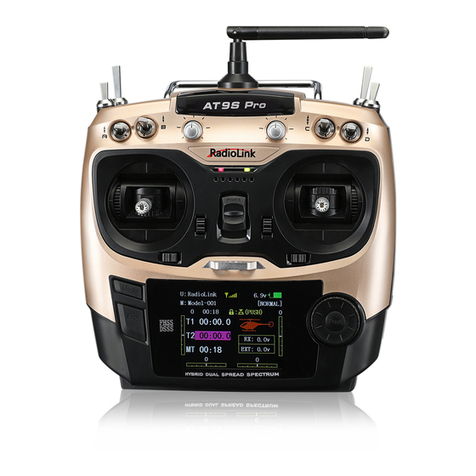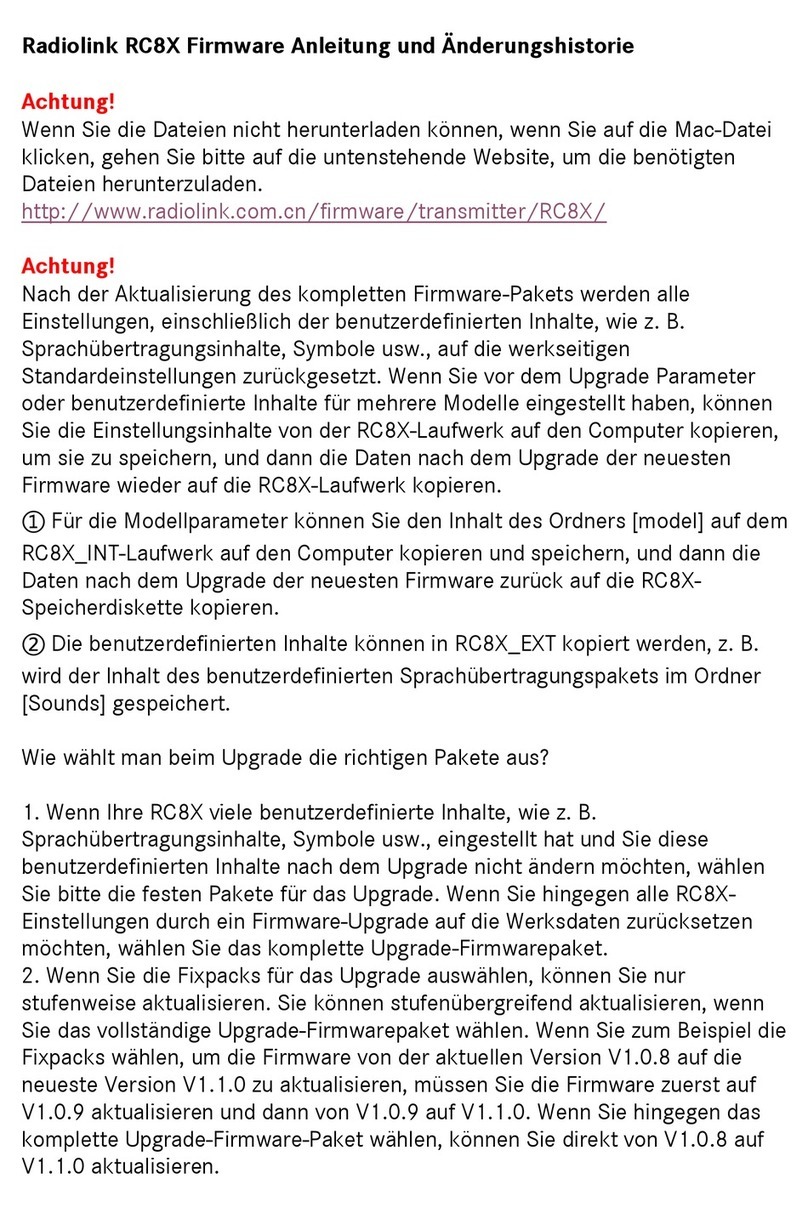
Setting steps: BASIC menu - SYSTEM - CH-SELECT.
Note: If the channel of AT9S Pro is selected incorrectly, the servo may vibrate all the time.
Binding Steps:
1. Put the transmitter and the receiver close to each other (about 30 centimeters).
2. Power on AT9S Pro and R9DS, the LED of R9DS will be on.
3. There is a black binding button (ID SET) on the side of receiver. Press the button for more than
one second and release, the RED (by default, could be Purple for SBUS&PWM signal output)
LED will flash, meaning binding process is ongoing.
4. When the LED stops flashing and is always on, binding is complete. There will be a signal
tower shown on top of the LCD screen of the transmitter. If not succeed, the LED will keep
flashing slowly to notify, repeat the above steps.
Note:Since RadioLink radio control systems are not open sourced, RadioLink transmitters are
ONLY compatible with RadioLink receivers. After connecting TBS Crossfire module to AT9S Pro,
the connection to TBS Crossfire receiver is supported
Binding
AT9S Pro and R9DS have already finished binding by default. Turn on AT9S Pro and R9DS, the
signal tower will be displayed on the top of the screen (See the right
picture), which means the transmitter and receiver have finished binding.
If you purchase a new R9DS receiver separately, you need to bind the
receiver to the transmitter. Each receiver has an individual ID code. When
the binding is done, the ID code will be stored in the transmitter and there's no need to rebind.
.
Installment of Antenna
1. Receiver Antenna Installment
(1) Please test RSSI (Received Signal Strength Indicator) before operating models. For
methods on how to test it, please refer to https://www.radiolink.com/newsinfo/477894.html.
(2) If the antenna of the receiver is damaged, replace it with a new antenna or receiver in time.
(3) Keep antennas as straight as possible, or the effective control range will reduce.
(4) Big models may contain metal parts that influence signal emission. In this case, antenna
should be positioned at one side of the model to ensure the best signal status in all
circumstances.






























